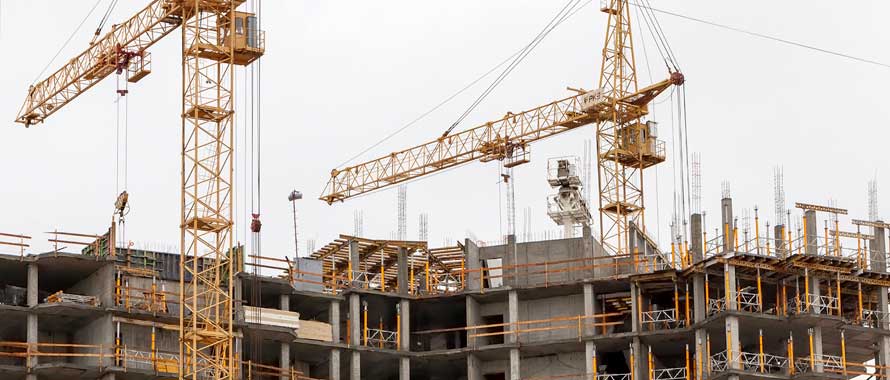The construction industry continues to be a leader in the economy, accounting for more than one million jobs, $59.4 billion in wages, and $138.3 billion in economic activity in Canada.1 Property damage on a construction site can result in severe, unexpected costs that may delay the building process or halt it entirely. A properly-tailored Builder’s Risk policy can adequately protect tradesmen against these types of risks.
Insurance Market Source regularly taps into its network of experts for insight into key trends and developments across the insurance landscape. Laura A. Bates, Corporate Vice President, Atain Insurance Companies, and Steve Hrab, Senior Construction Underwriter, Burns & Wilcox Canada, answer brokers questions regarding Builders Risk insurance policies.
Q: How do brokers determine whether a construction exposure requires a Builder’s Risk policy or another policy?
Steve Hrab (SH): Builder’s Risk insurance, also known as Course of Construction insurance, is designed to insure buildings or projects against repair or replacement costs while they are under construction and, in some cases, for a specified period of time thereafter. Any new, ground-up construction requires a Builder’s Risk policy. When a tradesman pours the footings, the framework for the new structure’s foundation, this is the exact point when the insurance carrier has an interest. Concrete is the first tangible and insurable portion of the project. It is important to note that policies covering existing properties do not extend coverage to new construction.
Q: How does the application of a Builder’s Risk policy differ between new construction and a renovation?
Laura Bates (LB): A Builder’s Risk policy covers the building from the ground breaking to completion of the project. Insurance coverage for renovation projects protect a building during the restoration period only. Insurance can be tailored to safeguard the cost of the renovations only or the existing building and the renovation exposure together. If a specific Builder’s Risk policy is not acquired, there may be a gap in coverage for either the existing building or the renovation portion. This is why it is essential to ensure the correct coverage forms are included. Additionally, the policy should feature a vacancy permit, which removes the vacancy clause that would exclude coverage if the property is vacant.
Any new, ground-up construction requires a Builder’s Risk policy.
SH: There are different rating and coverage factors that come into play when looking to insure a new build versus a renovation. Renovations have numerous variables to keep in mind as underwriters examine the risk of an existing location. Essentially, with renovations there is little that is known about the property. Previous insurers may not have held the property to standards that other carriers may prefer. On the other hand, a standard Builder’s Risk policy would normally not respond to any updates that change the footprint of the building or any interior-only projects that cost $75,000 or greater.
Q: What is an Installation Floater?
LB: Installation Floaters cover the cost of materials that have not yet been installed by contractors on a construction site. The contractor insures the value of work and un-owned materials that exist on a job site. Policies can be created on a job-specific basis or an annual basis, covering all projects a craftsman is working on during the policy period. The construction materials, or even appliances, are covered under the Installation Floater until they become a permanent part of structure, offering all risks protection.
Q: What steps are recommended to ensure a smooth submission for a Builder’s Risk insurance policy?
LB: Brokers should start with a fully completed Builder’s Risk policy application. This should include a full description of the project accompanied by a copy of the construction plan or contract, the projected timeline, as well as the cost of the project. Brokers should obtain details of all tradesmen involved and any accompanying General Liability coverage information, as well as confirmation of experience and all relevant licenses. Documenting details of security at the premises is encouraged to confirm whether it is fenced, lit, and monitored.
SH: Make sure to verify the experience level of the craftsman. A novice craftsperson can pose major underwriting issues, and – while they are insurable – may be subject to different rates. A second factor is to identify any unique features. For instance, cargo containers are growing in popularity to be used to build homes. This artisan construction material requires a unique need for heat application welding. If the contractor has limited experience here, the potential for disaster is greatly increased. Brokers should also be clear with clients that projects are to be insured for exactly what they are worth, no less. Underinsuring a project means that the correct amount of premium is not gained for the extent of exposure.
References:




